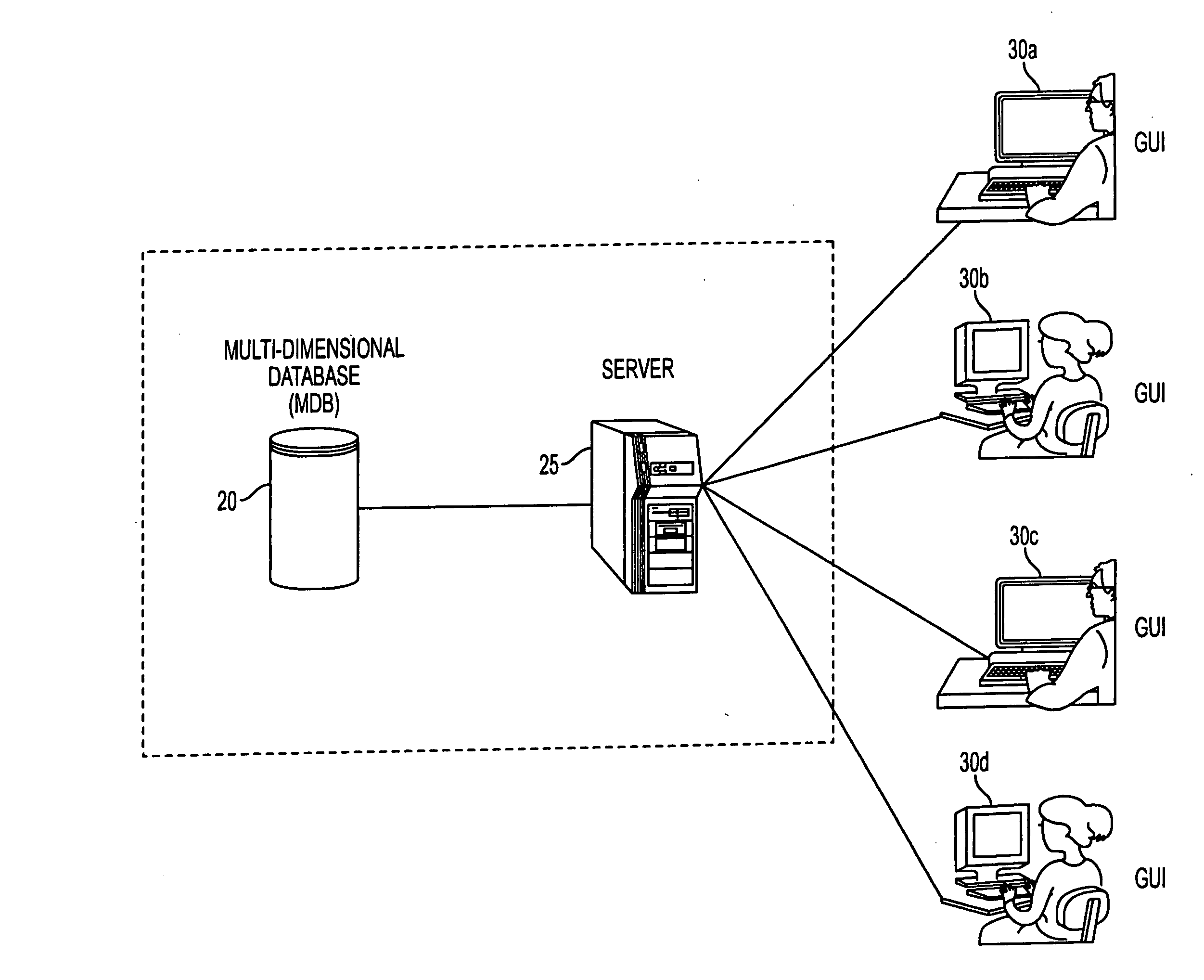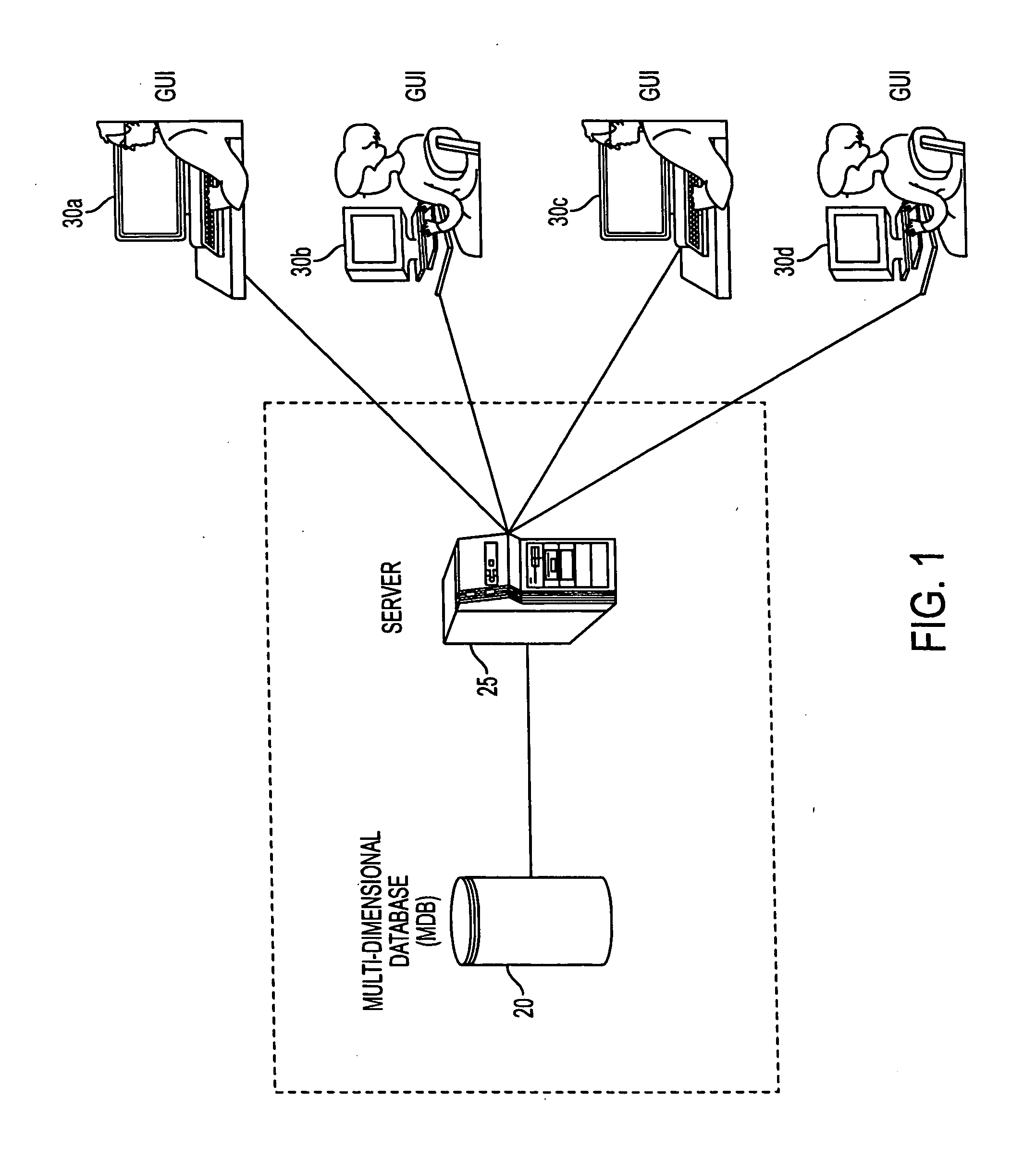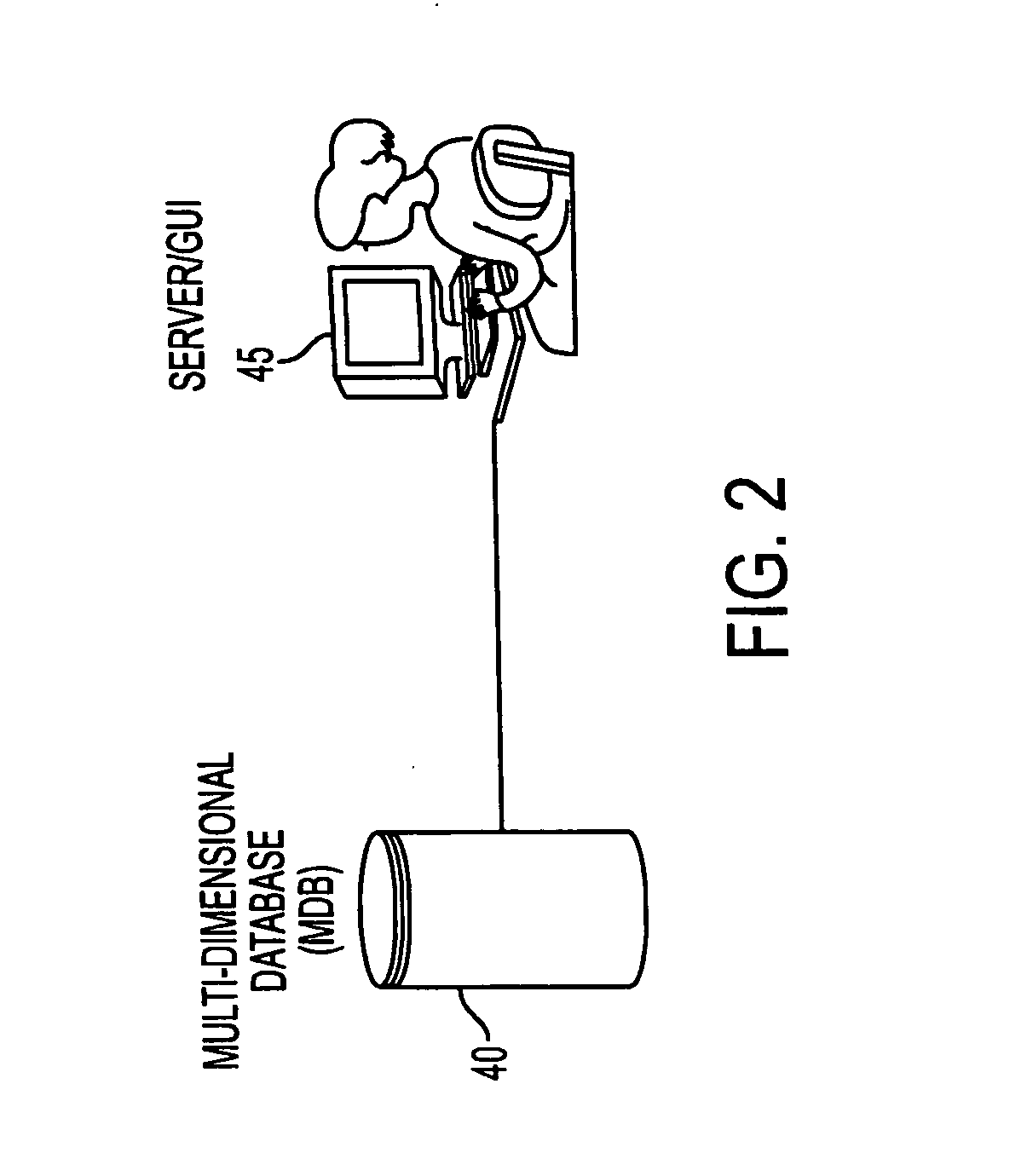Systems and methods for representing and editing multi-dimensional data
a multi-dimensional data and system technology, applied in multi-dimensional databases, visual data mining, instruments, etc., can solve the problems of limited display area, user interface provided, and business organizations demanding an increased granularity and complexity of data
- Summary
- Abstract
- Description
- Claims
- Application Information
AI Technical Summary
Benefits of technology
Problems solved by technology
Method used
Image
Examples
Embodiment Construction
[0043] Referring to FIG. 1, a schematic diagram of the network environment in which the systems and methods of the present invention operate is described. Multi-dimensional database (“MDB”) 20 is a multi-dimensional database for storing multi-dimensional data having many variables or dimensions. As used herein, the multi-dimensional data consist of data transacted by a business, educational, non-profit, or governmental organization. In a preferred embodiment, MDB 20 contains a variety of tables, with each table containing one or more data categories or fields in its columns. Each row in the table contains multiple instances of data for the categories defined by the columns. For example, an automobile manufacturer such as Ford Motor Company, of Dearborn, Mich., may use MDB 20 to include a table to store employee information of Ford's SUV division, a table to store employee information of Ford's truck division, and a table to store SUV and truck inventory information on a quarterly ba...
PUM
 Login to View More
Login to View More Abstract
Description
Claims
Application Information
 Login to View More
Login to View More - R&D
- Intellectual Property
- Life Sciences
- Materials
- Tech Scout
- Unparalleled Data Quality
- Higher Quality Content
- 60% Fewer Hallucinations
Browse by: Latest US Patents, China's latest patents, Technical Efficacy Thesaurus, Application Domain, Technology Topic, Popular Technical Reports.
© 2025 PatSnap. All rights reserved.Legal|Privacy policy|Modern Slavery Act Transparency Statement|Sitemap|About US| Contact US: help@patsnap.com



